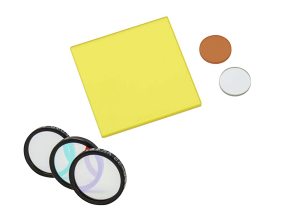Flow Cytometry
Reliable, High Quality Solutions for Challenging Flow Cytometry Applications
Flow Cytometry or Fluorescence Activated Cell Sorting (FACS) as a technique was developed in the 1960s and allowed sorting and collection of viable cells from a heterogeneous mixture. The first FACS systems used a mercury arc light source and could measure just one parameter, fluorescence intensity. Data archival was primitive by today’s standards and instruments could process 75-100,000 cells per minute. With the advent of computing, data storage and analysis technologies along with significant developments in lasers and optical technologies in the decades that ensued, flow cytometers have become the mainstay of the modern day clinical laboratory. Cytometry has found applications in fields as diverse as molecular biology and immunology to marine science.
These instruments can now process millions of cells per minute. There are three main systems within the Flow Cytometry instrument. A fluidics system transports sample particles in the fluid stream to the light source. The optical system is the heart of the instrument and consists of lasers that illuminate the particles present in the fluid stream as they pass through and scatter laser light. Fluorescent molecules on the particles emit light that is detected by carefully positioned lenses. Optical filters and beam splitters direct light signals to relevant detectors. Data is collected on each particle and characteristics of those particles are determined based on their fluorescent and light scattering properties. Finally, an electronics system changes the detected light signals into pulses that a computer can process.
The choice of lasers and optical components is extremely critical to the integrity of the flow cytometer. A poor quality or malfunctioning laser can compromise data integrity, leading to bad clinical decisions that could directly affect disease diagnosis. Low performance optical components may cause a reduction in signal-to-noise ratio leading to untrustworthy results. Properly designed optical systems will minimize these risks and keep the instruments running reliably for a long time.
Challenges in Flow Cytometry
The flow cytometers of today must meet the data accuracy, high throughput and low serviceability requirements of customers, especially in the clinical laboratory. Some of the high end models have as many as six lasers and highly complex optical systems that must be properly aligned, calibrated and managed, especially during instrument operation. The various systems and electromechanical assemblies within the instrument must work perfectly together in order to address some of the most pressing challenges in Flow Cytometry:
- Miniaturization of flow cytometers due to increase in demand for POC analysis
- Higher resolution and sensitivity
- Expanded application space to areas such as stem cell research
- Zero tolerance for erroneous readings, component malfunction and downtime
In addition, the growing research activity in life sciences is driving the need for flow cytometers in advanced technologies such as drug discovery. Rising prevalence of diseases such as HIV and cancer in Asia is driving the need for these instruments to become mainstream causing cost pressures on manufacturers. As the adoption of flow cytometers continues to grow, there is a strong focus on ease of use and intuitive data generation and interpretation.
Optical Technology Solutions for Flow Cytometry and Cell Sorting
Bio-instrumentation Lasers
The quality of lasers used in flow cytometers can directly affect instrument performance and product life. Superior quality lasers improve instrument resolution and sensitivity as well as reduce the overall cost of ownership. Laser quality can provide peace of mind that the data being generated is accurate and reliable. This is critical in scenarios such as cancer diagnosis. Spectra-Physics offer the broadest portfolio of state-of-the-art ultrafast, CW and pulsed UV lasers. With the world’s largest installed base, Our lasers offer exceptional stability and reliability. Available in a range of sizes, we offer the most compact pulsed UV laser, and the most advanced ultrafast lasers used in challenging bio-imaging, medical and pharmaceutical applications.
Nano-scale Motion
Proper sample positioning as it passes in front of the laser minimizes the risk of erroneous or missed readings. Motion Control Solutions include a wide variety of standard and custom motion products. Our Piezo precision motion products provide superior stability and accurate motion for distances as little as 30 nm. In addition, our extensive global installed base and broad range of customization capabilities for linear and rotation stages ensure that we have the right product for even the most demanding customer needs.
Optical Subassemblies
The optical subassembly in the flow cytometer that includes the light source, optics, filters, mirrors, mounts etc. is one of the most critical parts of the instrument. Depending on instrument complexity and customer requirements, a completely holistic optical system design is often required. This includes challenges such as mounting all the components in a small area, proper alignment, calibration and managing the light sources to avoid any unwanted beam path deviations. Our Integrated Solutions Business provides expert design and consulting services for the most complex of designs. With over 50 years of optics design and applications experience in diverse markets and geographies, MKS offers customers unique capabilities that result in world-class system design. The solid foundation of our global footprint includes presence in over 30 countries, including manufacturing capabilities in Asia and Central America.







 Ultra-High Velocity
Ultra-High Velocity